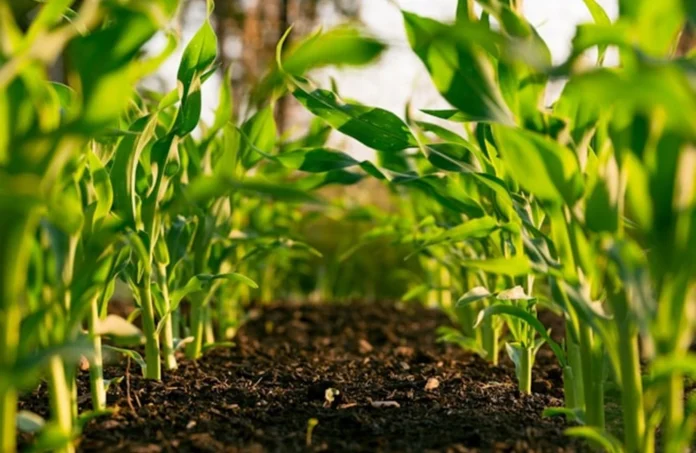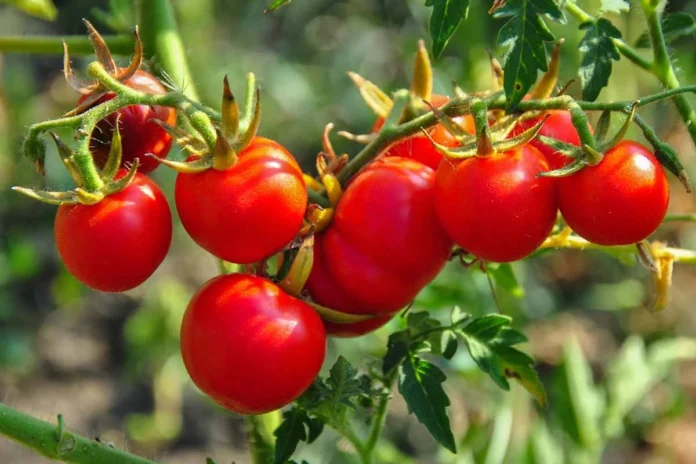Arabfields, M’bahiakro, Ivory Coast — As the sun beats down on the vast plains of central Ivory Coast, a gentle breeze rustles through fields of vibrant green rice plants, their golden ears swaying in anticipation of harvest. This landscape, stretching to the horizon, represents both the promise and the peril of the nation’s ambitious drive toward rice self-sufficiency. For decades, Ivory Coast has relied heavily on imports to feed its population, but a concerted push by the government, supported by international partners, aims to change that. Yet, as farmers like Georges Kouamé Yao can attest, the path forward hinges on one critical factor: reliable irrigation.
Ivory Coast, West Africa’s economic powerhouse and the world’s top cocoa exporter, has long grappled with food security issues, particularly for rice, a staple in Ivorian diets. The country consumes around 2.1 million metric tons of milled rice annually, but domestic production has historically fallen short, leading to substantial imports primarily from Asia. In 2024, imports totaled approximately 1.6 million metric tons, making Ivory Coast the second-largest rice importer in Africa after Nigeria. This dependency costs the nation hundreds of billions of CFA francs each year and exposes it to global market volatility.
The government’s response has been resolute. Under the National Rice Development Strategy (SNDR), revised in recent years, Ivory Coast set an initial target for self-sufficiency by 2025, later adjusted to 2026 to account for ongoing challenges. Production has risen steadily over the past five years, from about 1.2 million tons of milled rice in 2020 to an estimated 1.55 million tons in 2024. Forecasts for 2025 project output reaching 1.8 million tons, covering roughly 85% of domestic demand, according to the Agence pour le Développement de la Filière Riz (ADERIZ), the state agency overseeing the rice sector. To close the gap entirely, authorities estimate a need for at least 2.1 million tons annually, with some projections aiming for 2.6 million tons to include export potential.
This upward trajectory is no accident. It stems from a multifaceted approach involving improved seeds, mechanization, and value chain enhancements. International collaborations have played a pivotal role: the Islamic Development Bank (IsDB) financed a €104.2 million project to boost production from 3,200 to 20,000 tons annually in targeted areas. The Food and Agriculture Organization (FAO) and Japan provided $1.2 million for digitalizing the sector, building on tools like the Orange Money platform to streamline operations. China has also contributed through hydro-agricultural projects, such as the Guiguido initiative in Divo, introducing modern irrigation techniques to combat climate variability.
Yet, amid these advancements, irrigation remains the linchpin, and the Achilles’ heel, of Ivory Coast’s rice ambitions. In M’Bahiakro, a rural district in the central Gbêkê region, the Ayué N’zi cooperative embodies this struggle. Spanning 450 hectares of developed land, the area is primed for large-scale rice cultivation, with production destined for processing mills. But reality falls short: only about half the fields are actively farmed, leaving vast swaths parched and unproductive.
Georges Kouamé Yao, a member of the cooperative, surveys the fields with a mix of optimism and frustration. “Our parents grew rice, but it was rudimentary, small-scale,” he explains, gesturing to the undulating plants. “Today, we want to do it on a grand scale.” The grains, still encased in their husks, are paddy rice, ready for bagging. But without consistent water, yields suffer. In 2024, the cooperative harvested just 80 tons of paddy, thirty times below the site’s irrigated potential.
The culprit? Climate change. “We’re living under rain-fed rice now, facing all the problems of weather extremes,” Kouamé Yao says. “Rain no longer respects the seasons. We’re dealing with the difficulties of this change.” Erratic rainfall patterns, intensified by global warming, have disrupted traditional farming cycles. In Ivory Coast, rising temperatures and more frequent precipitation extremes are projected to reduce agricultural productivity, particularly for water-intensive crops like rice. Arable lands in highland plateaus are becoming less viable due to diminished irrigation feasibility, pushing cultivation toward inland valleys where water management is even more challenging.
Across the country, only 3% of rice fields were irrigated in 2024, with the vast majority dependent on unpredictable rains. This vulnerability underscores a broader African trend: while irrigated rice yields could increase by 25% in some regions due to CO2 fertilization and milder temperatures, West Africa faces declines from heat stress and water scarcity. In Ivory Coast, climate impacts threaten not just rice but the livelihoods of millions, as agriculture accounts for a quarter of GDP and employs 60% of the workforce.
Existing infrastructure in M’Bahiakro hints at untapped solutions. Concrete canals border the fields, and an inflatable dam on the N’zi River serves as a water reservoir. However, these facilities lie largely idle, overgrown with weeds. The reason boils down to economics: pumping costs are prohibitively high for smallholders.
François Kouadio, the cooperative’s president, breaks it down. “The minimum cost per hectare is 40,000 CFA francs [about €60],” he says. “You have to cover soil preparation, inputs, you have to pay! After all that, the farmer is in deficit. He doesn’t go home with even five francs. For now, it’s better to stick with rain-fed.” This sentiment echoes nationwide, where high upfront investments deter adoption despite long-term benefits.
Yacouba Dembélé, Director General of ADERIZ, is unequivocal about the need for change. “We are in insecurity, you cannot achieve self-sufficiency with rain-fed rice culture; it’s not possible,” he asserts. ADERIZ, established to coordinate the rice value chain, advocates for lighter, more affordable irrigation systems along rivers rather than costly large-scale dams. “We do what we call ‘run-of-the-river intakes’ that retain and distribute water,” Dembélé explains. “The essential is that the water doesn’t run dry, and we have extraordinary potential! Developing one hectare this way costs between 800,000 and 2 million CFA francs [€1,200 to €3,000], versus 35 million CFA [over €50,000] for a dam.”
Such innovations align with government initiatives like the Project for the Promotion of Local Rice (PRORIL), part of the Coalition for African Rice Development (CARD), which has increased marketed rice volumes in targeted areas. The Boundiali Rice Sector Performance Improvement (BRISPI) project, meanwhile, focuses on sustainable supply chains for smallholders. Private sector involvement, such as TerraVerde’s collaboration with Ekobell for irrigated rice and vegetable production, further bolsters these efforts.
In M’Bahiakro, local authorities, including the mayor’s office, support these aspirations. For Kouadio, it’s more than economics, it’s national pride. “Our goal is to help our country achieve self-sufficiency,” he says passionately. “When we see imported rice sold in shops here, our hearts bleed.” On the local market, M’Bahiakro’s rice is sold in bulk, competing against cheaper Asian imports that flooded the market with 1.6 million tons in 2024.
Looking ahead, optimism persists. The Africa Rice Center (AfricaRice) projects that with sustained investments, Africa could add 30 million tons to its rice output, aiding self-sufficiency. In Ivory Coast, tools like decision-support systems for monitoring rice areas and yields under climate stress are being piloted. Initiatives such as alternate wetting and drying (AWD) irrigation, which saves water while maintaining yields, offer adaptive strategies.
The Adaptation Fund-backed project in the Bandama Basin aims to enhance rural communities’ resilience, addressing decreased productivity from higher temperatures and extreme weather. A World Bank Climate-Smart Agriculture Investment Plan outlines strategies to mitigate impacts, emphasizing irrigation expansion.
As Ivory Coast edges closer to its 2026 goal, the rice sector’s transformation could ripple beyond borders, positioning the nation as West Africa’s rice bowl. For farmers in M’Bahiakro, the dream is simple: abundant harvests that feed their families and nation. But realizing it will require bridging the irrigation gap, turning parched potential into a bountiful reality.












